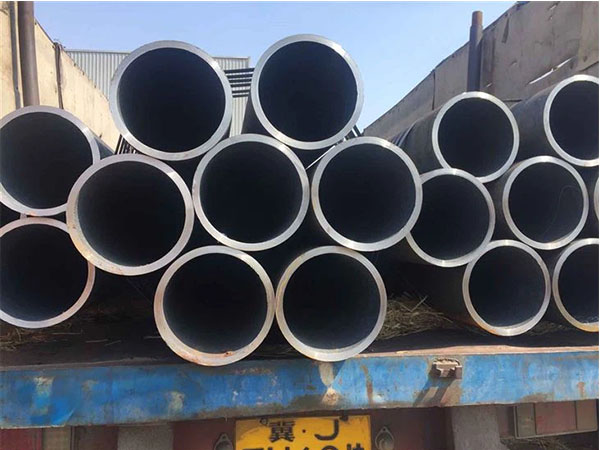Carbon steel pipes (CS pipes) are long straight pipes with circular or other cross-sections made from carbon steel through various processing. Carbon steel is a steel alloy of iron and carbon, with a carbon content of less than 2%. Compared with other materials (such as stainless steel, copper, aluminum, etc.), the main alloying component of carbon steel pipes is carbon, which makes it have better pressure-bearing capacity, impact resistance and durability, and is suitable for different construction requirements.
Material and chemical composition
Typical carbon steel grades:
ASTM A53 Gr.B/A106 Gr.B (American Standard)
API 5L B Black Pipe (Petroleum Pipeline Standard)
EN 10255 (formerly known as BS 1387) Straight seam welded steel pipe (European standard)

The main chemical components (taking A106 Gr.B as an example) :
Carbon (C) : ≤0.30 can enhance strength, but excessive content will reduce the plasticity and weldability of the product.
Manganese (Mn) : 0.27-0.63 can enhance hardening and strength, while improving crack resistance during welding.
Silicon (Si) : ≤0.40. As a deoxidizer, it improves processing performance.
Phosphorus (P)/sulfur (S) : Impurities. Excessive content will lead to a decrease in the toughness of the material.
The main characteristics of carbon steel pipes in construction
High strength and durability: Carbon steel pipes have a very high tensile strength and can withstand considerable stress without deformation or fracture. Carbon steel pipes used in construction are often used as pressure-bearing materials, and this characteristic is particularly important in the construction industry.
2. Versatility: Carbon steel pipes for construction can be customized according to different shapes, sizes and applications, making them suitable for various construction projects.
3. Corrosion resistance: Coatings or alloys can be applied to the surface of carbon steel to enhance its corrosion resistance and extend its service life in certain special environments.
4. Cost-effectiveness: Carbon steel materials are usually cheaper than alternative materials such as stainless steel. Using carbon steel can effectively reduce the project budget and is a practical choice.
5. Weldability and machinability: Carbon steel pipes are easy to weld and shape, especially low-carbon steel pipes, which have good plasticity and ductility, and can be efficiently installed and constructed in construction projects.
Typical applications in architecture
Water supply and drainage system: DN15 - DN150mm seamless/welded pipes;
HVAC (Heating, Ventilation and Air Conditioning) : Boiler feed water, steam delivery;
Structural supports: scaffolding pipes, columns, beam trusses;
Fire protection pipe network: DN50 - DN100mm hot-dip galvanized pipes;
Curtain walls and guardrails: Shaped pipes and square and rectangular pipes can be selected as required.
Carbon steel pipes are renowned for their high load-bearing capacity, long service life and durability, and have become indispensable structural materials in building structures.
